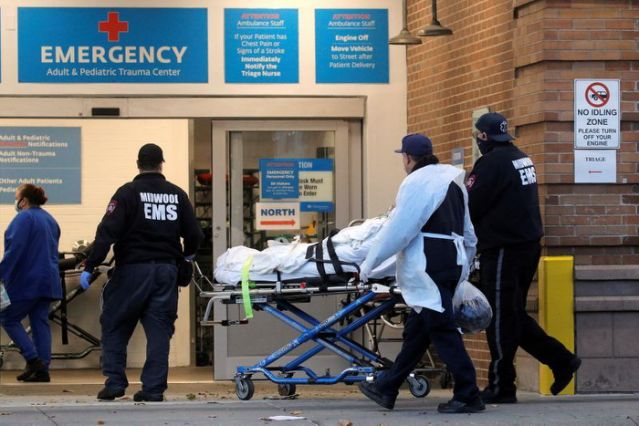
(Reuters) – California’s governor on Thursday ordered a curfew placed on all indoor social gatherings and non-essential activities outside the home across most of the state in a major escalation of measures to curb an alarming surge in coronavirus infections.
The limited stay-at-home restrictions will go into effect from 10 p.m. until 5 a.m. each day, starting Saturday night and ending the morning of Dec. 21, covering 41 counties representing over 94% of the state’s population, Governor Gavin Newsom said.
“The virus is spreading at a pace we haven’t seen since the start of this pandemic, and the next several days and weeks will be critical to stop the surge,” Newsom said in a statement announcing the measure.
He said the restriction is essentially the same as California’s first-in-the-nation statewide stay-at-home order that Newsom imposed in March, except it applies only during the designated curfew hours rather than around the clock.
A short time earlier, President-elect Joe Biden emerged from a teleconference with 10 governors from both parties saying they had discussed a possible “implementation of a national mask mandate.”
Biden, who has stressed the need for a coordinated national strategy to fight the pandemic, also repeated he had no plans to impose a U.S. lockdown, contrary to claims made during the election by President Donald Trump and other Republicans.
“I am not going to shut down the economy, period. I’m going to shut down the virus,” Biden told reporters, adding, “I’ll say it again: no national shutdown. Every regional area, every community is different.”
REIMPOSING RESTRICTIONS
Newsom’s order came as state and local government leaders nationwide were moving to reimpose restrictions on social and economic life, seeking to tamp down soaring rates of COVID-19 infections and hospitalizations heading into winter following a summertime lull in the pandemic.
Health experts say greater social mixing and indoor gatherings during the holiday season, combined with colder weather, will likely accelerate the surge, threatening to overwhelm already strained healthcare systems.
Newsom, a first-term Democrat, warned that “more stringent actions” may be necessary if the latest efforts to blunt the contagion fall short.
Republican state Assemblyman James Gallagher sharply criticized the governor’s action, saying, “An arbitrary curfew will only further decimate struggling businesses that already face some of the toughest hurdles in the country.”
The newly ordered curfew in California, the most populous U.S. state with some 40 million residents, came a day after New York City’s public school system, the nation’s largest, called a halt to in-classroom instruction due to rising infection rates there.
NEW YORK GYMS, RESTAURANTS
Critics of New York City Mayor Bill de Blasio questioned why public schools, which had partially reopened for in-person learning in September, should close again while bars, restaurants and other businesses were allowed to stay open.
De Blasio said school closures were only temporary and that he expects the state to shut down indoor dining and gyms in the city “within a week or two” given the rising infection rates.
Natalia Petrzela, whose 8-year-old daughter attends a New York City public school, said the uncertainty over classes had taken an emotional toll on families.
“I am sick as a working mom of waiting, checking Twitter to see if schools are going to be open tomorrow and how to juggle my work responsibilities and tell my daughter again to buck up,” Petrzela told Reuters in an interview.
At a briefing by members of the White House’s task force on the pandemic, Vice President Mike Pence said it was the position of the task force and of the U.S. Centers for Disease Control and Prevention “that we do not need to close our schools.”
Government officials in at least 22 states, representing both sides of the U.S. political divide, have issued sweeping new public health mandates this month. Those range from stricter limits on social gatherings and non-essential businesses to new requirements for wearing masks in public places.
The number of patients hospitalized with COVID-19 in the United States has jumped nearly 50% in the last two weeks, with almost 79,000 people being treated for the disease in hospitals across the country as of Thursday, a Reuters tally showed, the most at any time during the pandemic.The U.S. death toll from COVID-19 surpassed a grim new milestone of 250,000 lives lost on Wednesday, and public health experts have projected that the number could climb well above 400,000 by March.






